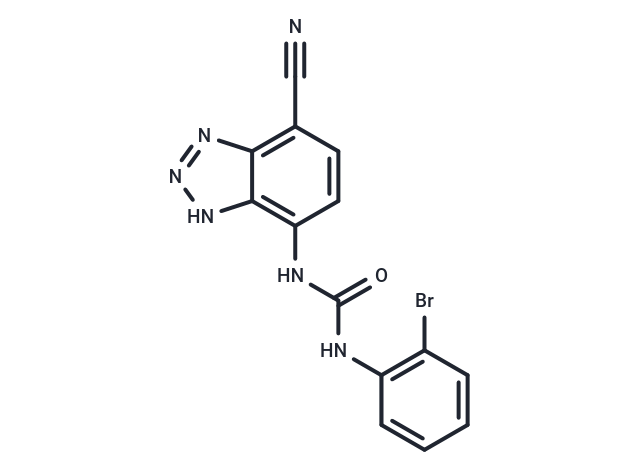Shopping Cart
- Remove All

Your shopping cart is currently empty


| Pack Size | Price | Availability | Quantity |
|---|---|---|---|
| 1 mg | $51 | In Stock | |
| 5 mg | $122 | In Stock | |
| 10 mg | $197 | In Stock | |
| 25 mg | $396 | In Stock | |
| 50 mg | $589 | In Stock | |
| 100 mg | $843 | In Stock | |
| 500 mg | $1,730 | In Stock | |
| 1 mL x 10 mM (in DMSO) | $133 | In Stock |
| Description | SB-265610 (GSK-CXCR2) is a nonpeptide and allosteric CXCR2 antagonist. SB-265610 blocks rat cytokine-induced neutrophil chemoattractant-1 (CINC-1)-induced calcium mobilization and neutrophil chemotaxis (IC50s: 3.7 nM and 70 nM, respectively). |
| In vitro | SB-265610 decreases the antiapoptotic effect of CINC-1 to the levels of those untreated with CINC-1. SB-265610 antagonizes rat cytokine-induced neutrophil chemoattractant-1 (CINC-1)-induced calcium mobilization (IC50 of 3.7 nM) and rat neutrophil chemotaxis in a concentration-dependent manner (IC50 of 70 nM) [1]. |
| In vivo | SB-265610 (100 mg/kg/day;p.o; daily; for 5 days; CXCR2 wild type mice) treatment markedly delays healing parameters in CXCR2 wild type mice during the wound repair process[2]. |
| Alias | GSK-CXCR2 |
| Molecular Weight | 357.16 |
| Formula | C14H9BrN6O |
| Cas No. | 211096-49-0 |
| Storage | Powder: -20°C for 3 years | In solvent: -80°C for 1 year | |||||||||||||||||||||||||||||||||||
| Solubility Information | DMSO: 66 mg/mL (184.79 mM) | |||||||||||||||||||||||||||||||||||
Solution Preparation Table | ||||||||||||||||||||||||||||||||||||
DMSO
| ||||||||||||||||||||||||||||||||||||

Copyright © 2015-2024 TargetMol Chemicals Inc. All Rights Reserved.